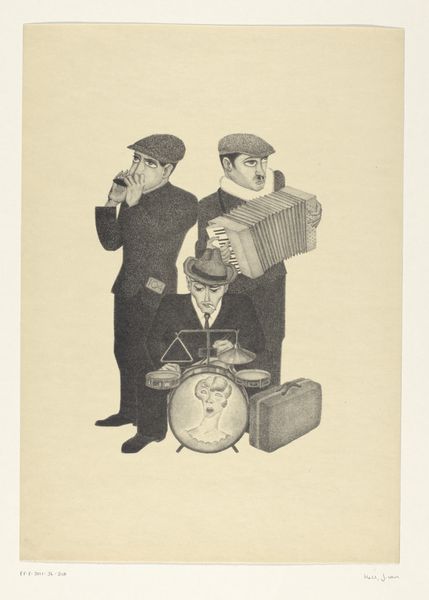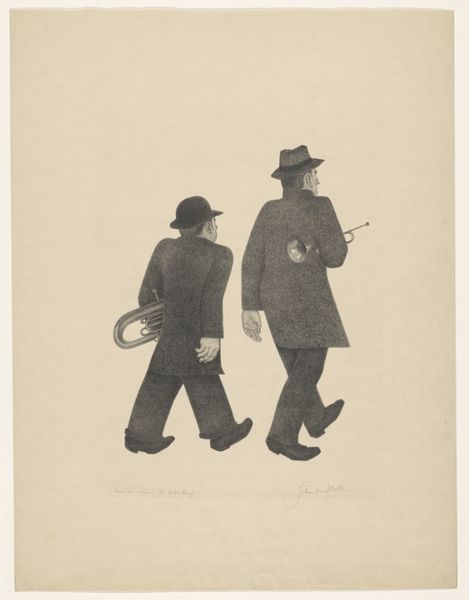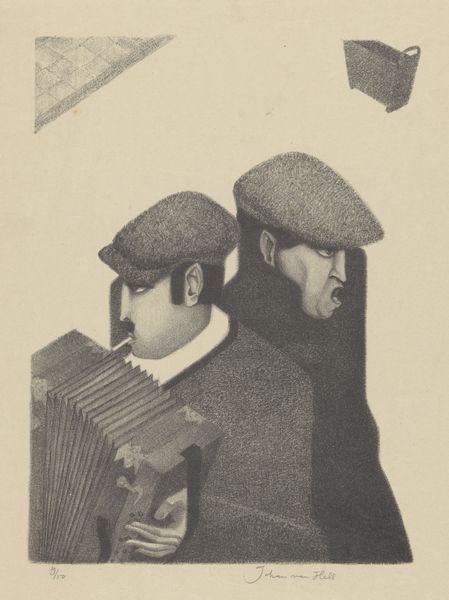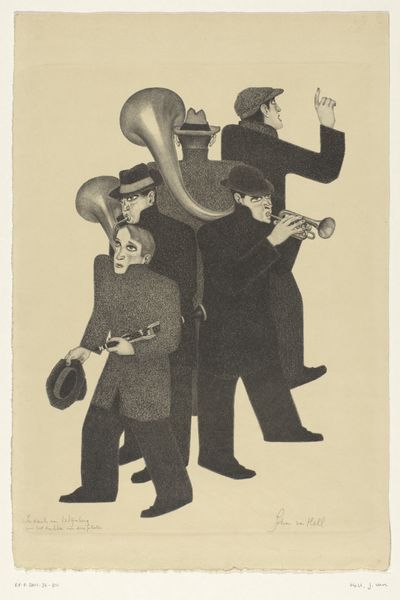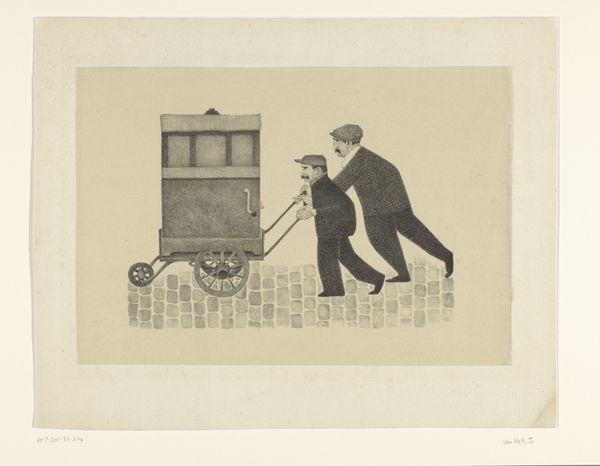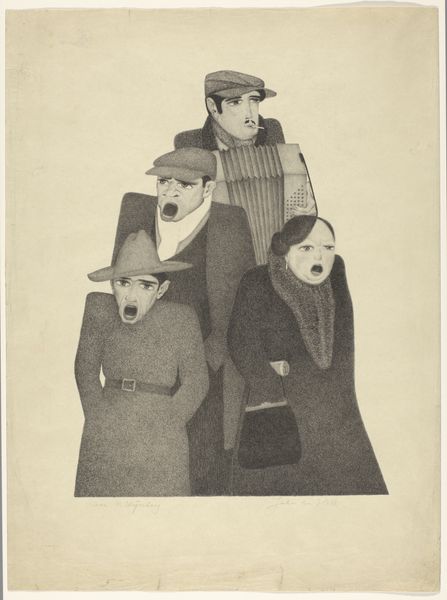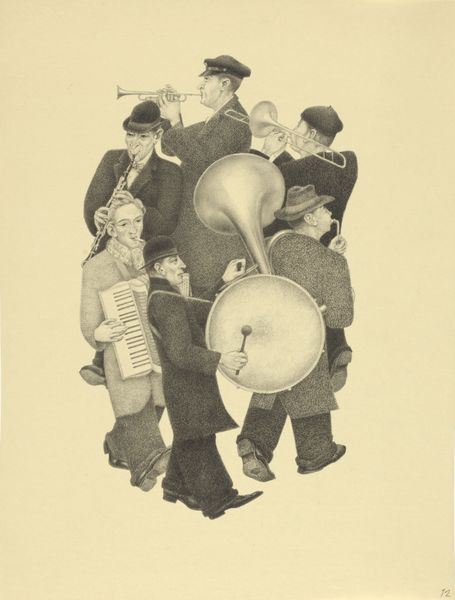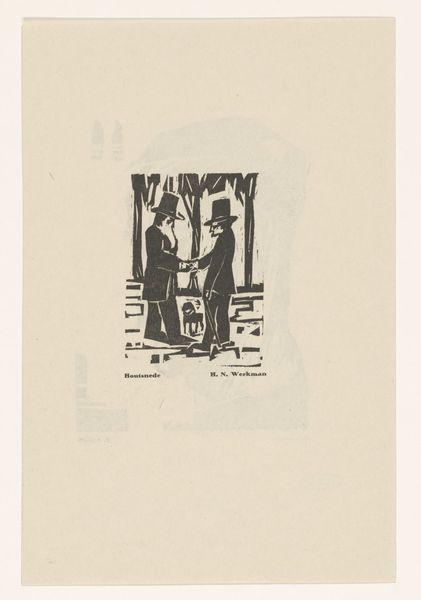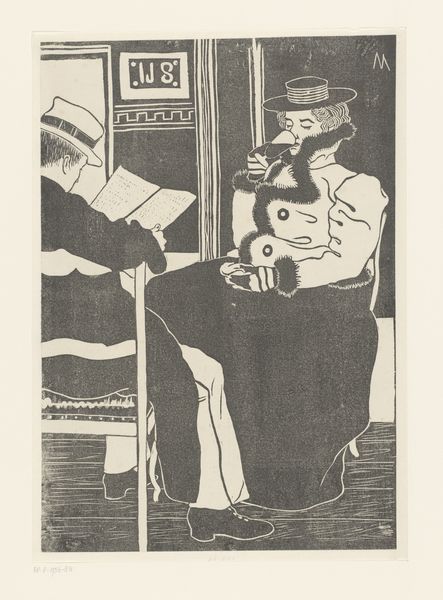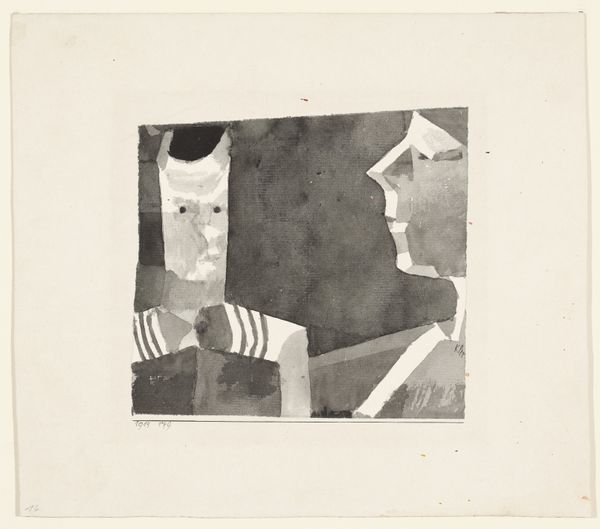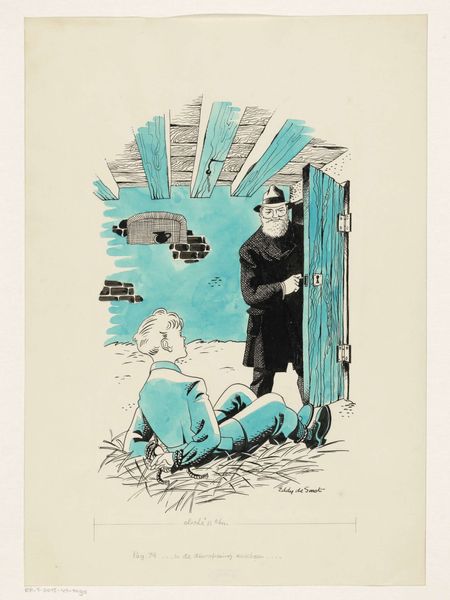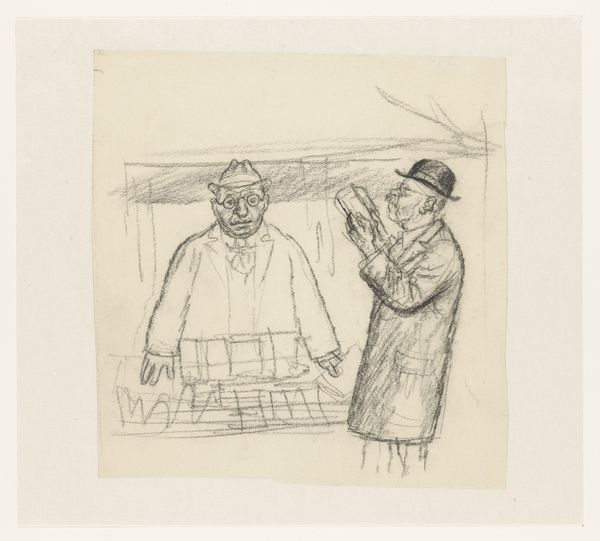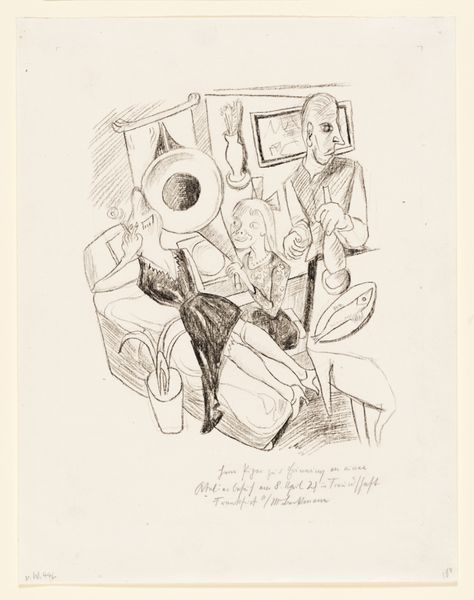
drawing, pencil
#
portrait
#
drawing
#
caricature
#
caricature
#
figuration
#
pencil
Dimensions: height 651 mm, width 474 mm
Copyright: Rijks Museum: Open Domain
Curator: Welcome to the Rijksmuseum. Today, we will be discussing Johan van Hell’s pencil drawing, “Zingende zaag," made sometime between 1899 and 1938. It depicts two men, one playing the musical saw, and the other holding an accordion. My first impression is how muted and almost melancholic it feels. Editor: Yes, and that’s interesting considering that a “zingende zaag” translates to “singing saw". Perhaps that title is deeply ironic, knowing that it emerged in a period framed by significant socio-political turmoil and mass social movements. The drawing evokes a certain solemnity, maybe reflecting the somber mood of the interwar period. Note their hats and what could be interpreted as worker's uniforms—could it be a reference to a disaffected or marginalized social group during a volatile time? Curator: Looking at the figures themselves, one immediately notices their somewhat exaggerated features, especially in their faces. The artist’s meticulous application of the pencil strokes defines volume and creates subtle gradations, adding to the overall intensity of their expressions. The sharp angles of the saw held in the foreground almost bisect the frame, which disrupts any reading that might offer comfortable compositional closure. Editor: The fact that this drawing borders on caricature points to the social satire and critique often used to give a voice to the voiceless and challenge existing power dynamics. The accordion, juxtaposed with the singing saw, can be viewed as commentary on art's accessibility: one mass produced, one deeply singular. Their positioning in the frame makes the standing man appear as a ghostly, looming figure—another disruption to our interpretation. I would like to know how the subjects would perceive this work. Curator: From a formal perspective, van Hell uses hatching and cross-hatching to model his figures, concentrating shadow under the brims of their caps, deepening the set of their eyes, further complicating the mood. This is particularly apparent in the treatment of the hands holding the saw, each drawn with detailed attention to the articulations. The stark contrast is emphasized by the flatness of the negative space surrounding the men, as if they are on a stage, sharply spotlighted and set apart. Editor: Van Hell seems to push the viewer to engage critically. He draws our attention not only to the musical performance but also the social realities surrounding it—especially considering the role music can play in facilitating social organizing and dissent. This interplay turns "Zingende zaag" into an eloquent representation of humanity amid disruption. Curator: Indeed, on closer inspection, there are structural paradoxes embedded in the form that reflect ambiguities that exceed any initial impression. Editor: Agreed. This certainly urges me to reflect on the diverse roles that art can play in addressing historical narrative.
Comments
No comments
Be the first to comment and join the conversation on the ultimate creative platform.
